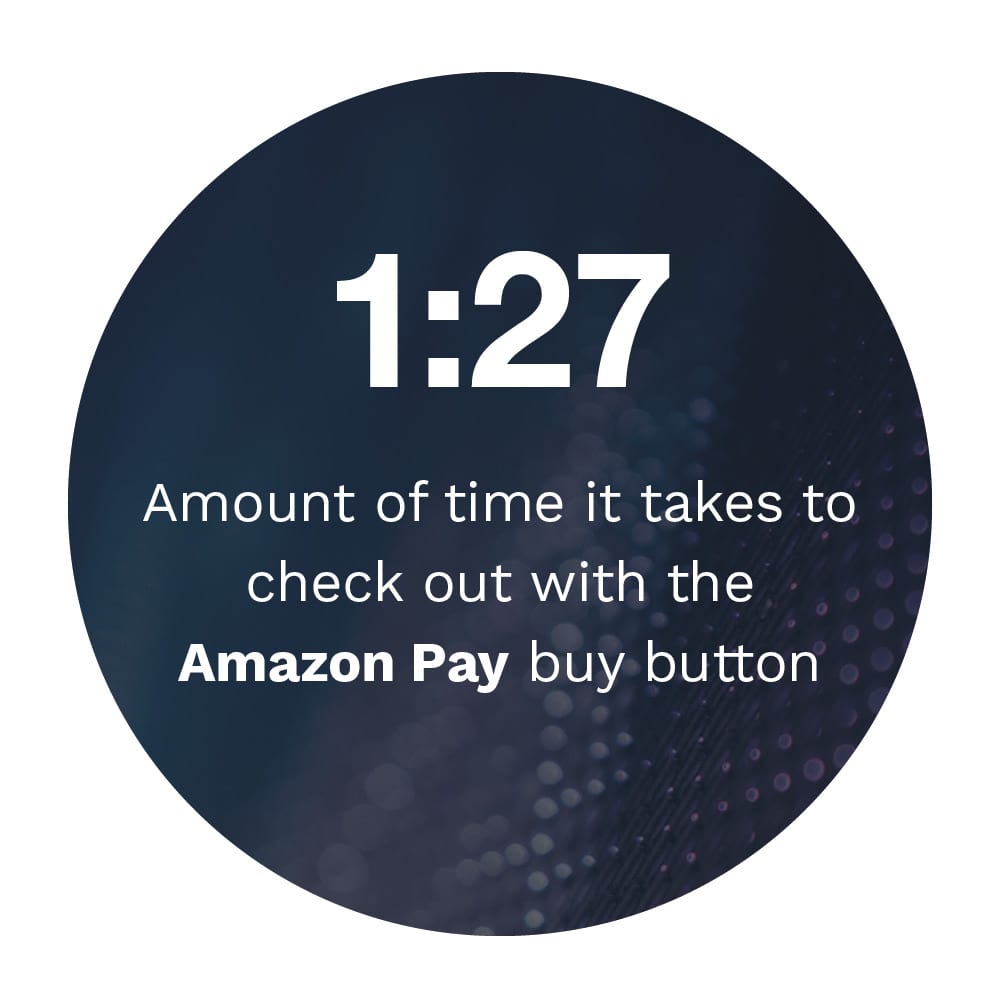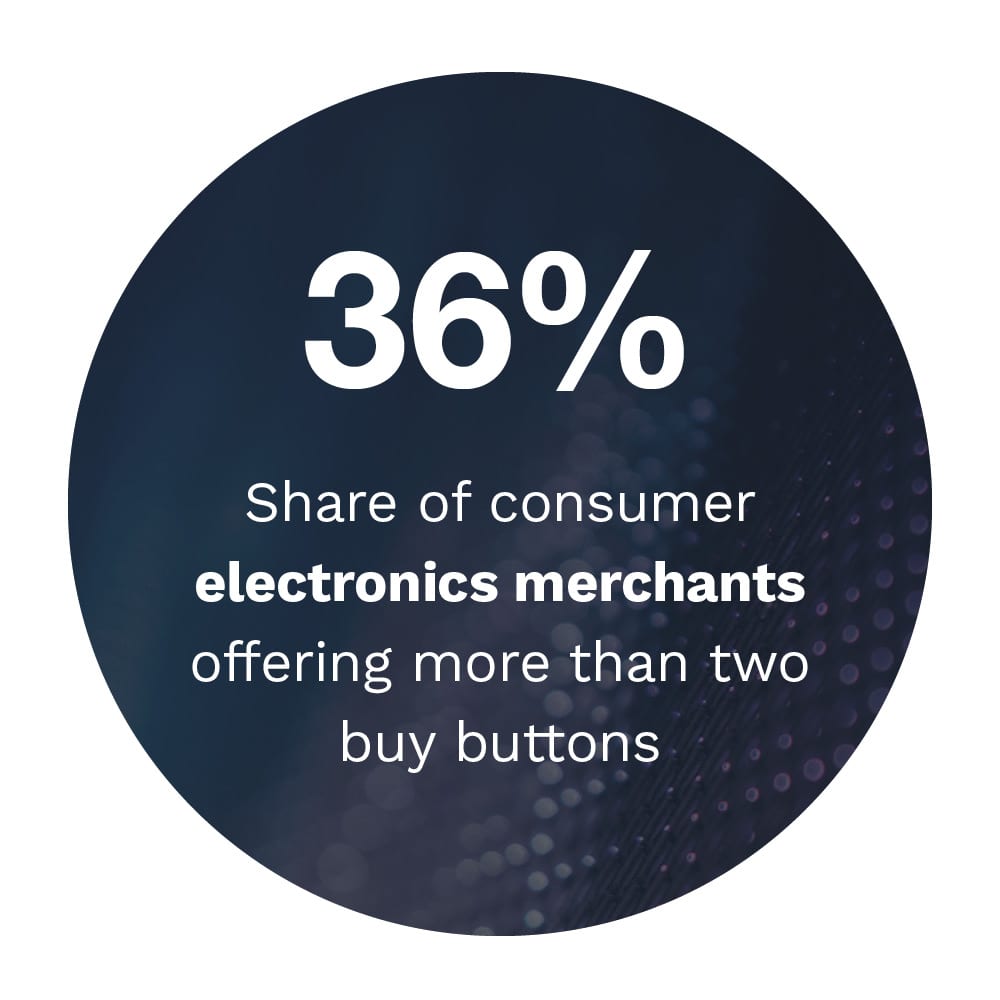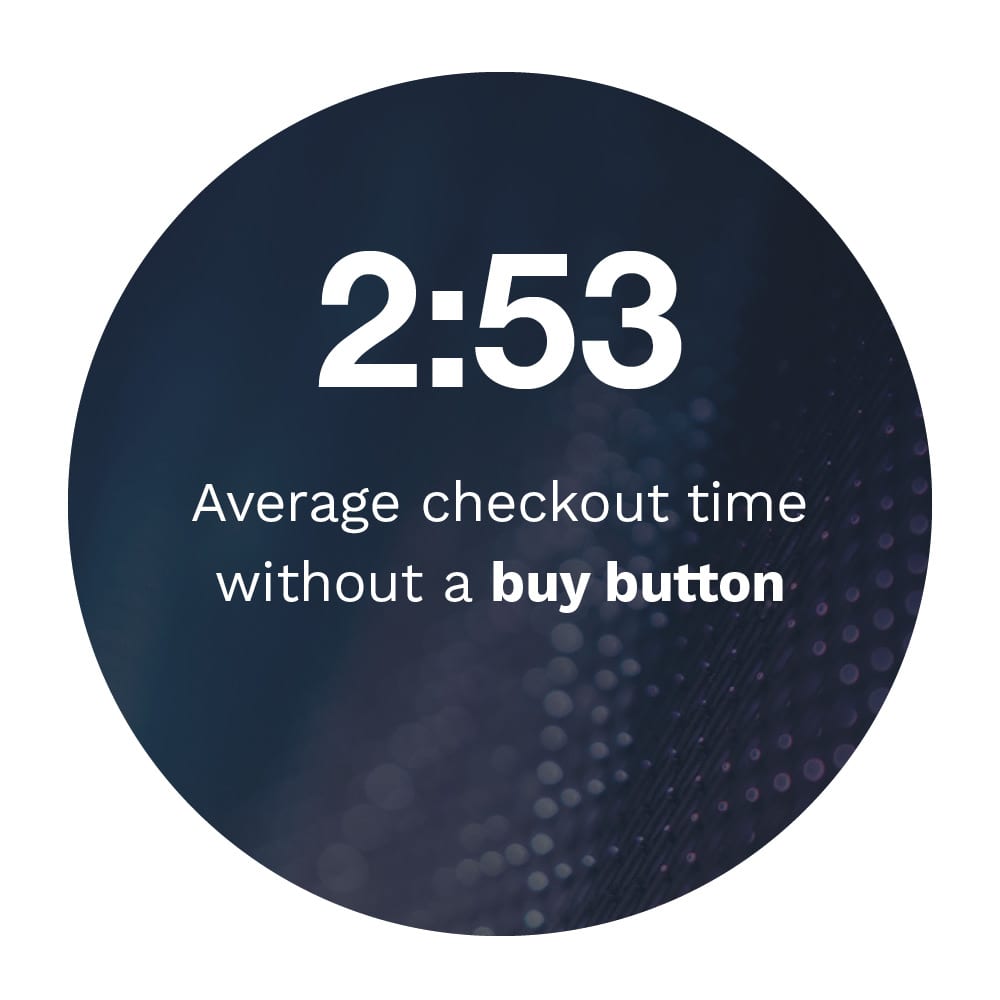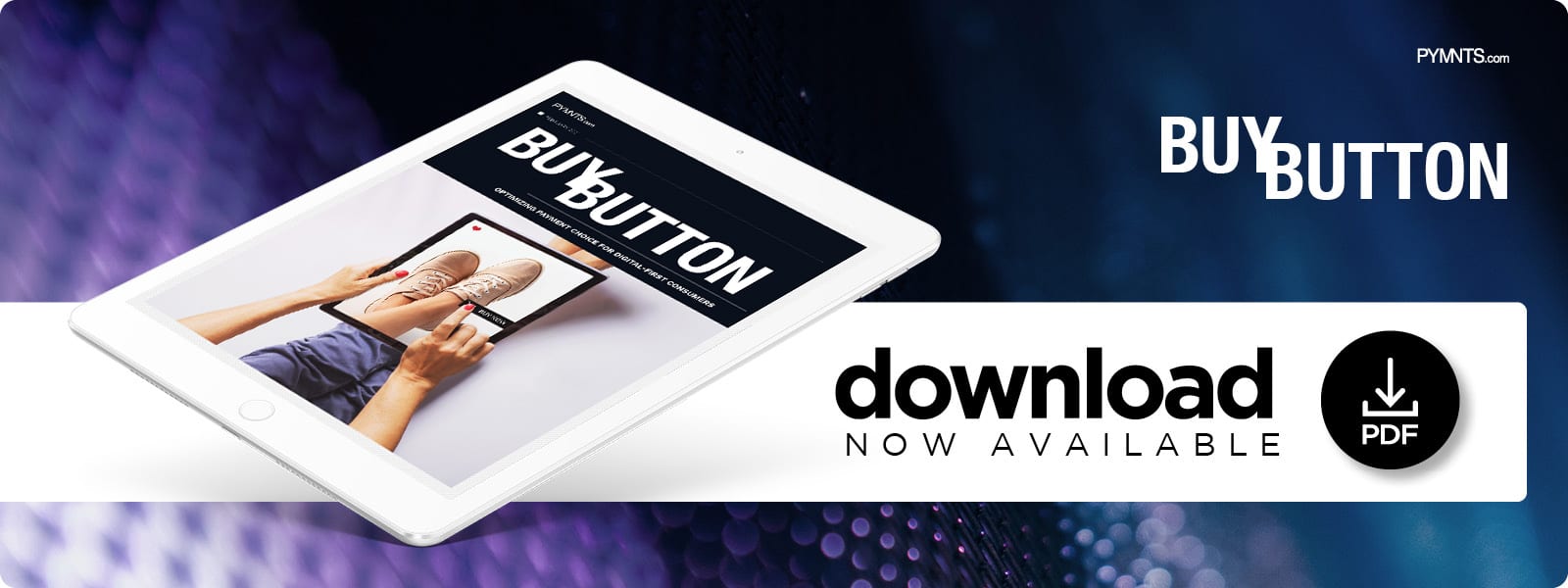Just Press Buy: Buy Buttons Impact Retail Performance During Q4

Buy buttons — click-to-purchase payment innovations that have reduced checkout times by as much as 50 percent — have remained nearly ubiquitous among leading retailers since PYMNTS began tracking them in 2016. However, the past year saw a dramatic shift with a record 76 percent of all retailers offering them in Q4 2020.
 Buy buttons have given retailers a rare opportunity to tap into an innovative payment solution that can satisfy unmet consumer demand for checkout-streamlining payment features and give them a tangible way to boost their revenues during the pandemic. Many merchants’ decisions to offer buy buttons have been driven by data rather than last-ditch efforts to improve their sales. PYMNTS’ research establishes a clear reason for this: Consumers who do not use buy buttons face an average checkout time of two minutes and 56 seconds, while those who do see average checkout times of one minute and 39 seconds.
Buy buttons have given retailers a rare opportunity to tap into an innovative payment solution that can satisfy unmet consumer demand for checkout-streamlining payment features and give them a tangible way to boost their revenues during the pandemic. Many merchants’ decisions to offer buy buttons have been driven by data rather than last-ditch efforts to improve their sales. PYMNTS’ research establishes a clear reason for this: Consumers who do not use buy buttons face an average checkout time of two minutes and 56 seconds, while those who do see average checkout times of one minute and 39 seconds.
So, what made the difference in determining retailers’ checkout success with certain buy buttons and how could retailers best deploy them to maximize the customer experience?
In the Buy Button Report: Optimizing Payment Choice For Digital-First Consumers, PYMNTS examined 811 leading American eCommerce sites’ recent and previous checkout process data to assess the evolution of buy button adoption rates. Our analysis considered several key factors — including average annual revenues and ticket prices of sites that offered buy buttons — to provide a  comprehensive overview of the solutions’ roles in the eCommerce ecosystem and how they are poised to change in the future.
comprehensive overview of the solutions’ roles in the eCommerce ecosystem and how they are poised to change in the future.
We found that some of the world’s most valuable tech brands — including Amazon, Apple and Google — played catch-up to PayPal’s ongoing dominance at checkout in 2020. Amazon Pay, Google Pay and Apple Pay made significant strides toward competitiveness with PayPal but still lagged far behind the latter’s 73 percent adoption rate. Amazon Pay, the second-most accepted buy button, was offered by only 18 percent of leading merchants. Google Pay (10 percent) and Apple Pay (6 percent) boosted their adoption by top retailers in 2020 but posed little threat to PayPal’s acceptance rate.
Our research also revealed that merchants are  hesitant to take a “NASCAR” approach to buy buttons: They aim to avoid putting off consumers by cluttering their checkouts with buy button logos, with the majority of merchants (70 percent) offering two or fewer buy buttons to shoppers. Regardless, retailers in certain segments know that their consumers have an affinity for speed at checkout despite their aversion to logo boarding. Merchants’ success in reducing checkout time varied by retail segment, with the biggest winners being jewelry (48 percent checkout time reduction), hardware and home improvement (46 percent), apparel (45 percent reduction), automotive (45 percent) and health and beauty (45 percent) retailers.
hesitant to take a “NASCAR” approach to buy buttons: They aim to avoid putting off consumers by cluttering their checkouts with buy button logos, with the majority of merchants (70 percent) offering two or fewer buy buttons to shoppers. Regardless, retailers in certain segments know that their consumers have an affinity for speed at checkout despite their aversion to logo boarding. Merchants’ success in reducing checkout time varied by retail segment, with the biggest winners being jewelry (48 percent checkout time reduction), hardware and home improvement (46 percent), apparel (45 percent reduction), automotive (45 percent) and health and beauty (45 percent) retailers.
These findings outline just a few of the insights uncovered by our analysis. To learn more, download the report.

